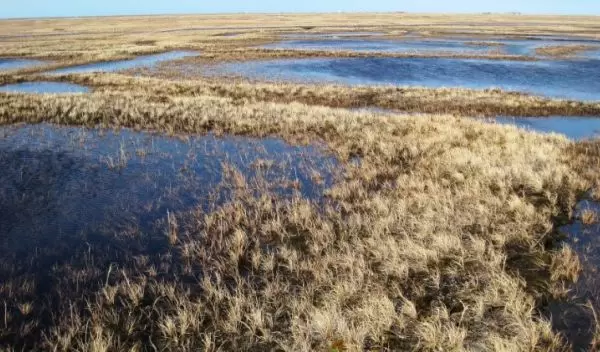
Monitoring Arctic permafrost with satellites, supercomputers and deep learning
Permafrost -- ground that has been permanently frozen for two or more years -- makes up a large part of the Earth, around 15% of the Northern Hemisphere.
Permafrost is important for the planet's climate, containing large amounts of biomass stored as methane and carbon dioxide, making tundra soil a carbon sink. However, permafrost's innate characteristics and changing nature are not well understood.
As global warming heats the Earth and causes soil thawing, the permafrost carbon cycle is expected to accelerate and release soil-contained greenhouse gases into the atmosphere, creating a feedback loop that will exacerbate climate change.
Remote sensing is one way of getting a handle on the breadth, dynamics and changes to permafrost. "It's like a virtual passport to see this remote and difficult-to-reach part of the world," says Chandi Witharana of the University of Connecticut. "Satellite imaging helps us monitor remote landscape in a detailed manner we never had before."
Over the past two decades, much of the Arctic has been mapped with precision by commercial satellites. These maps are a treasure trove of data on this largely underexplored region. But the data are large and unwieldy, says Witharana.
With funding from the U.S. National Science Foundation, Witharana, as well as Kenton McHenry of the National Center for Supercomputing Applications and Anna Liljedahl of the Woodwell Climate Research Center, are making data about Arctic permafrost more accessible.
"This is a perfect example of how investments in computing infrastructure, combined with a new understanding of deep learning techniques, are building a resource to help with an important issue in the Arctic," said Kendra McLauchlan, a program director for the NSF Navigating the New Arctic program.
The research team was given access to archives of more than one million images taken in the Arctic. That's a lot of data -- so much that traditional analysis and features extraction methods failed. "That's when we brought in AI-based deep learning methods to process and analyze this large amount of data," Witharana said.
After showing that the deep learning method worked, the researchers turned to the Longhorn supercomputer, operated by the Texas Advanced Computing Center, as well as the Bridges-2 system at the Pittsburgh Supercomputing Center, allocated through the NSF-funded Extreme Science and Engineering Discovery Environment to analyze the data. The team presented the results at American Geophysical Union Fall Meeting in December 2021.
